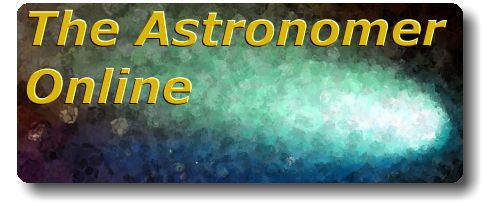
Last Updated:
2017 Jan 15 15:49 UTC
Source file:
software.txt


Last Updated: |

|
Contents
|
Various items of software are available for download or purchase. Much of the
software is available for Windows NT and OS/2. Some has not yet been updated
and only runs under DOS. Note that most of the NT programs will also run under
Windows 95 but they will not run under Windows 3.11.
image.exe version 0.47 (OS/2, NT, Linux)This program uses the same image processing kernel as display.exe but it is a command line, batch mode processor which can be used to process multiple file selections. It is most useful when reducng multiple CCD frames made during an observing run on a particular field. It is possible to extract magnitudes and positions of multiple stars in multiple images without human intervention.Download NT version, OS/2 version or Linux ELF version. ast.exe version 2.03 (DOS)This program will search its database of over 35,000 asteroids to check whether any fall within a given box at a given time. It is great for checking nova and supernova suspects against known asteroids. A complete search takes only a few seconds on a 486DX33 PC.The program accepts a target position in 1950 or 2000 coordinates with variable tolerences in RA and Dec. It then computes the position of all objects within its database to establish whether there were any in the field at the specified time. The cost is £15 for the program and the asteroid database. The latest elements set can be downloaded from our web site. findvga ver 3.4 (DOS)This utility decodes the numerical finder chart information sent with our e-circulars and displays it as a chart. This allows us to send charts out within hours of an object's discovery. The program also allows semi-accurate positions to be read off the screen using a mouse-based cursor.Findvga is a DOS-based program which uses standard VGA graphics. The cost is £15 for the program and over 100 charts. Note that this program does not run under Windows 98 or Windows NT.
eph ver 2.16 (DOS)This is an ephemeris program which generates RA, Dec, Earth and Solar distances, solar elongation and magnitude. In addition it generates an object's motion and PA to simplify offset guiding. The program can calculate 1950 or 2000 positions and can use elements of both epochs. Click here for an example of the output.EPH.EXE is a DOS based program. The cost is £10 for the program and a database containing over 100 comets. orbit.exe ver 2.2 (DOS)This program generates orbits from three or more precise positions. It uses a modified version of Gauss' method. The price of £10 includes the IAU astrometry stations list.horizon ver 1.3 (DOS)This program calculates and graphically displays the track of a comet or asteroid within the altitude and azimuth parameters selected. It uses a text file containing the ephemeris of the object which should have been calculated using the EPH program. Click here for an example plot. The price of this DOS-based program is £10.CHART ver 2.13 (OS/2 and NT)This program allows owners of the FITS version of the Hubble Guide Star Catalog CD-ROM (not supplied) to prepare their own charts for research and observation. The charts can be displayed using FINDVGA. The price of this program is £10.display.exe ver 0.31 (OS/2 PM)
The multi-threaded image processing program Display.exe has the following features:
|
|
Webmaster: Peter Meadows |